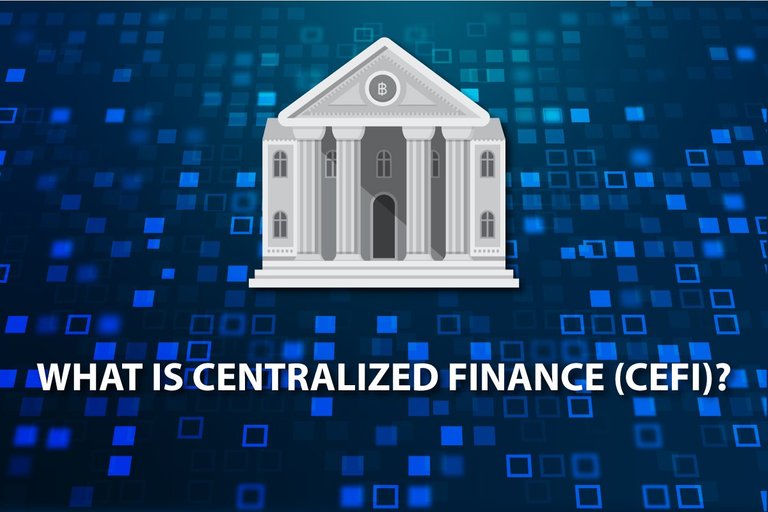Understanding the centralized Funding on the Blockchain
In this era of 21st century, the world financial system has founded a new trading way that become popular after the popularity of blockchain platforms. It has helped in emergence of thousands of cryptocurrencies in a technological sphere. Despite the fact that bitcoin was introduced for decentralization of financial trading system, but it is now being used mostly for trading of cryptocurrencies.
As the crypto trading was introduced, it bring two finances centralized (CeFi) and decentralized (DeFi). These include unique features such as trading crypto derivates like BTC Futures, digital assets' tokenization, and giving crypto loans. The CeFi is used to act as a third party or an intermediate that controls the user's transactions and cryptographic activities.
What is CeFI Centralized Funding on the Blockchain Lesson 3 Blockchain Series.jpg
Background from Freepik and edited on Adobe Illustrator
What is CeFi?
It is a financial activity that let users to acquire loans, earn interest and buy sell cryptocurrencies with the help of third party centralized institution or a centralized exchange. To perform above functions, your private key will be sent to the third centralized party who will be responsible of your crypto coin orders and payments. The main goal of CeFi is to optimize the efficiency and the profitability of transactional services while making fair exchanges. It helps an individual to borrow some money in the form of cryptocurrency, trade cryptocurrency, receive rewards, and use crypto debit card.
CeFi vs DeFi
The main difference between CeFi and DeFi is an intermediate that let an individual to buy and sell cryptocurrencies. CeFi uses a centralized exchange or an institution whereas DeFi is based on blockchain technology. CeFi exchanges like Binance and Coinbase let you use crypto services through their exchange and they act like a third party which means they are not decentralized. While the DeFi exchanges rely on blockchains such as Ethereum blockchain or Binance Smart Chain (BSC).
In CeFi exchanges, there is a third party or an intermediate that is responsible for the funds and transactions of the users. This means the risk for user lies with the exchange. Whereas in DeFi exchanges, there is no third party or an intermediate and both parties are responsible for their buying and selling of cryptocurrency. They depend on the smart contracts which are digital agreements automatically starts when conditions are met. Moreover, in CeFi, a user needs to complete KYC procedure that verify the identity of the user while in DeFi there is no KYC process invovled.

